23. Mar 2018 - DOI 10.25626/0082
Nancy Waldmann is a freelance journalist for German print media, writing regularly on Poland. During her studies at European University Viadrina she developed an interest in questions of memory and identity in European and postcommunist contexts and became involved in Institute for Applied History. From August to November 2017 she received a grant from the Network of Western and Northern Territories (Sieć Ziem Zachodnich i Północnych) to undertake research in Szczecin on de-communization of public spaces.
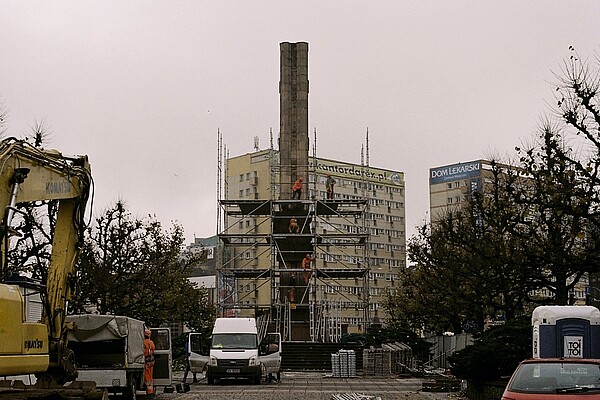
In September 2017, bulldozers tore down the mausoleum in the Polish town of Trzcianka built in memory of Soviet Red Army soldiers. Two months later, the Monument of Gratitude for the Red Army (Pomnik Wdzięczności dla Armii Radzieckiej) in Szczecin, the capital of Western Pomerania, was demolished. One week later, the same thing happened to the 23-meter high Victory Column in the nearby town of Stargard. In the village Kęszyca Leśna, which had served as a Soviet garrison town during the Cold War era, the Soviet soldier depicted in an impressive monument was transformed into a Polish soldier overnight after someone skilfully painted a red and white flag on his arm and a white Polish eagle on his helmet. Nobody in the village is willing to say it openly, but the secret ‘Polonization’ of the statue was probably carried out with the intent of preventing its imminent removal as ordered by the new law banning communist propaganda. Some villagers have, indeed, proclaimed their determination to defend ‘their soldier’.
Dominated by the conservative Law and Justice (PiS) Party, the Polish government has recently moved to dismantle communist-era monuments as part of the so-called process of de-communization. In Poland, the term ‘de-communization’ describes the comprehensive attempt to re-write recent history as a strictly anti-communist narrative. Its key proponents have been rightist political groups, who have been pushing it since 2016. They seek to frame both anti-communism as the raison d’être of the new Poland, and, more broadly, as that of history itself. In addition to dismantling public monuments and renaming streets, the policy of de-communization also includes pension cuts for around 32,000 former employees of the communist-era security organs, such as the Ministry of Public Security, and for veterans of the Army of the Polish People’s Republic (PRL). Moreover, the policy seeks to remove people from leadership positions in Polish police departments who had been employed by the police before 1990.
The monuments intended for demolition can be found all across the country: some are dedicated to the victory of the Red Army over Nazi Germany; others demonstrate gratitude for the liberation of Poland by the Red Army during the Second World War. Memorials to Polish-Soviet friendship (“Brotherhood in Arms”) and to former communist politicians of the Polish People’s Republic (PRL) are also slated for demolition by the end of March 2018.
There is a particularly large number of such monuments in northern and western Poland, which only became part of the country in 1945, when the state border was shifted westward and formerly German cities became Polish. According to some Polish scholars, the inhabitants of these regions have a distinct, largely positive view of the public commemoration of Soviet soldiers and of the role the Soviet Army played in making the region part of Poland. Many of the monuments still serve as important sites for memorializing the victims of the war.[1] The current government’s plans to remove these monuments thus often collide with local memory practices and narratives about the year 1945 that were established after 1989. Like under the communist government, the region is thus once again experiencing a re-interpretation of its history and public sites of memory from above.
Central to the current de-communization process is law no. 744 “on the prohibition of propagating communism and other totalitarian regimes” (Zakaz propagowania komunizmu i innych totalitarnych ustrojów). The law was passed almost unanimously by the Sejm on 1 April 2016.[2] In its original version, it was only concerned with the renaming of streets and buildings, which municipalities were to do within twelve months. The law’s drafters had planned to expand its scope to include the removal of public monuments, but they deferred including these provisions because this would have violated the international treaty between Poland and Russia on the “keeping and proper maintaining of memorial and resting places […] of soldiers and civilians killed […] as a result of wars and reprisals” that had been signed in February 1994. Then, in October 2017, an amendment to the law was adopted that extended the law to monuments, commemorative plaques, sculptures and symbols in public spaces. In order to pass the amendment, the Polish government had to re-interpret the treaty as protecting only actual burial sites, while claiming that it did not cover monuments without graves.
The new de-communization law was supplemented with a list of 469 monuments all over Poland that fulfilled the criteria for removal; the list was prepared by the Polish State Institute of National Remembrance (IPN) and the voivodes (regional administrations). The primary justification for this drastic move was that the monuments could allegedly be used by those who wish to propagate communist and totalitarian ideas. Yet in reality, these monuments have, in post-1989 Poland, rarely been sites of pilgrimage for communists or other extremists. Instead, they have more and more come to serve as spaces for nationalist and anti-communist agitation.[3] They are often publicly condemned as “Monuments of Shame” by those who wish to tout the honour and purity of the Polish nation.
It is important to note that the new legal provision does not apply to monuments on military cemeteries, nor to objects exhibited for artistic or educational purposes. In contrast to some reports in Russian media, Soviet military cemeteries remain protected. But the situation is not always so clear-cut – for instance, when there are burial sites underneath a monument. In fact, during the communist era, bodies were often buried near memorials built in the 1940s and were only later exhumed and brought to cemeteries. The records of bodies buried and bodies exhumed do not always match up, often because of poor documentation or incomplete exhumation.[4]
If municipal governments fail to carry out the law’s provisions by the deadline, the voivode can order the renaming of streets and the removal of monuments. The IPN plays a decisive role in this process. Once the deadline has passed, the government can request that it compile a report in order to determine whether or not the monument or street name in question falls under the scope of the law. The deadline for re-naming streets and public places was in the summer of 2016. Recently, the deadline for the removal of monuments was shortened: If municipalities remove a monument by the end of March 2018, the costs will be paid out of the state budget. If, however, a municipality does not comply and the voivode thus ends up removing a monument after March 2018, the municipality will be forced to bear the costs.
The law thus constitutes a serious violation of the jurisdiction of local municipalities, which normally make decisions about re-naming streets and maintaining or removing monuments (at least so long as doing so does not involve international treaties). However, the current process of de-communization is not just a top-down process carried out by the central government. In the end, it relies on the support and willing cooperation of local authorities and large parts of civil society.
The above-mentioned removal of the monument of gratitude to the Red Army on Polish Soldier Square (Plac Żołnierza Polskiego) in Szczecin ended two decades of local debate over the future of the object. One of the reasons for this extended debate was the monument itself and what it represented. Featuring two figures, one of a Soviet soldier, the other of a Polish worker, the monument also displays the dates of battles in Pomeranian and Masurian cities that were occupied by both Soviet and Polish troops. The monument thus combined Soviet and Polish narratives of liberation. In 1992, the Soviet star crowning the top of the object was removed, because it was perceived as a symbol of the former Soviet hegemon. The removal of the star provoked the Russian Consul General to visit the town hall of Szczecin to express his outrage. According to Dominika Czarnecka, the dismantling of the entire monument in the early 1990s was seen as too difficult and too expensive. Later, the monument was added to a list of protected monuments enumerated in the aforementioned 1994 bilateral treaty. The treaty made any thoughts about its relocation or alteration even more difficult, as all actions would have had to be coordinated with the Russian side.[5] The polarized views on the monument ultimately led the municipality to neglect maintaining the site, resulting in its dilapidation.
In early 2014, an initiative of 23 local, mostly right-wing organizations, including groups of former Solidarność activists, the far-right organization Obóz Narodowo-Radykalny (ONR), and the local football fan club, appealed to the mayor to remove the monument. For them, the monument to the Red Army honoured the “aggressor of 17 September 1939” and the “murderers of Katyn”, as they wrote in an open letter to the mayor. Organizations of veterans of the former People’ s Army (Armia Ludowa) protested in an open letter against the initiative. In May 2016, with the government having already decided to re-interpret the 1994 treaty and the amending of the de-communization law in sight, the city council decided to finally remove the monument for good. A last-minute proposition supported, among others, by the archbishop to make the statue into a sign of reconciliation by placing a figure of the Holy Mary on top of it failed to garner support. In November 2017, the monument was removed. The sculptures of the soldiers were eventually relocated to the city’s central cemetery next to graves of Soviet soldiers.
The removal of the monument in Szczecin is exemplary of what has happened in many other cities in the region. It demonstrates that de-communization is not just a process imposed on municipalities from above, by the PiS-dominated central government, but that it is often wished and carried out from below by local grassroots initiatives that feel re-invigorated by the new party in power.
In this sense, the policy of de-communization might be seen as an effort to close a chapter of post-1989 Polish history that was marked by recurrent public and political quarrels over how to deal with the relics of the PRL era. These quarrels were as much about how to assess the period between 1944 and 1989 as a whole as they were about how to define the significance of a monument. Are monuments defined and re-defined by their observers and surroundings, or are their meanings defined once and for all by those who commissioned them and designed them? The law itself and the IPN’s interpretation of it give clear, radical answers to these questions: They treat the entire history of the PRL as a “totalitarian system”, not just the period between 1944 and 1956, as is common among historians. In this reading, the end of the Second World War in 1945 is not interpreted as a break, but rather as a mere change from one brutal occupying regime to another: the Germans left, the Soviets came, and, even worse, they stayed much longer. The uncritical application of the new historical narrative is demonstrated well by the way in which the authorities dealt with the task of re-naming Aleja Wyzwolenia (the Avenue of Liberation), a central boulevard of Szczecin. In the end, the name stayed the same. In its justification for the decision, the city council followed a proposition that stated that Polish liberation took place not in 1945 (as it was formerly understood), but in 1918, “when our fatherland was liberated from the fetters of the invaders”. This was a reference to the year when Poland was re-established as a sovereign state in the aftermath of the First World War. Yet the events of 1918 celebrated during this years’ centenary of Polish Independence have very little to do with the city of Szczecin, which, in 1918, was still called by its German name Stettin and was still part of the German Empire; it remained a part of Germany throughout the interwar years and was only transferred to Poland in 1945.
For those who subscribe to this expanded understanding of totalitarianism, the heroic monuments built by the Soviets or the PRL authorities as expressions of ‘gratitude’ towards the liberating Soviet Army are unacceptable. For them, they deserve the same treatment as monuments representing National Socialism. Proponents of de-communization similarly reject alternative solutions that would make it possible to retain the monuments, such as neutralizing their ideological contents – like the city of Szczecin tried in 1992 – changing their meaning by adding a new inscription (or a Holy Mary statue), or adding an explanatory note that says something about the monument’s original context. Whereas the de-communization of the 1990s generally sought to integrate existing monuments into the new political and social context (although hundreds were removed then, too), today’s de-communization leaves no space for compromise and is, in general, not even open to preserving monuments as local historical artefacts or as memorials to victims of war.
Despite enjoying the considerable support of local authorities and civil society organizations, the dismantling of monuments and re-naming of streets in recent months has also been met with some resistance. A particularly dramatic instance of an unauthorized attempt to change a monument in order to preserve it took place in Drawsko Pomorskie, where people took initiative to save “their tanks”. “Their tanks” are two old Soviet T34s that had been left behind after the end of the Second World War. They sit on a wide pedestal; the weathered inscription states that they are dedicated “to the soldiers of the Red Army who fell in the battles for the liberation of the Drawsko land”. For some inhabitants, the tanks are significant not so much as memorials, but as objects that stir up memories of childhood play.[6] Others see them as a landmark and a symbol of the town, which is located next to Poland’s largest military training area.
In order to save the monument and keep it in its original location, the municipality first considered re-naming it, and then considered declaring it an outdoor exhibit of a nearby museum. The IPN’s response to these attempts to preserve the site was to seek the removal of the tanks with the proviso that they would later be displayed at a new location. The local “Society of Friends of Drawsko” organized a public event in order to give people the opportunity to express their memories of and support for the memorial. In a public hearing, locals and experts discussed how the monument might be made to adhere to the law while educating people about its past. One proposal was to create a “palimpsest” by covering the problematic inscription and the Soviet star with a piece of glass such that they would still be visible.[7] Another, very different proposal came from the artist who created the pedestal in 1970: he suggested transforming the monument in a way that would commemorate both the Centennial of Polish independence as well as the allies of the Anti-Hitler Coalition, the Polish soldiers from all the fronts of the Second World War and the Polish civilians, who arrived in Drawsko from various places.
Before the discussions could reach any conclusion, the mayor of Drawsko made a unilateral decision of how to protect the tanks and monument from impending destruction: Workers with pneumatic hammers removed the inscription, the Soviet star and the slabs depicting fighting soldiers. The now bare pedestal was covered over with new bricks, and a discrete placard was prepared that gives technical data about the tanks, such as their range, speed and age. At the time of writing, a decision by the voivode was still pending, as the government will undertake a formal assessment of the municipalities’ de-communization efforts after the deadline of March 2018 has passed.
In the formerly German western and northern territories that only became part of Poland in 1945, de-communization and the revised narrative of Polish history associated with it have generated considerable inconsistencies. The reason is that 1945 was a year of radical transformation for this region, and is a key date in the history of cities like Wroclaw, Szczecin and Olsztyn. The mainstream post-war narrative about the region’s history goes something like this: Thanks to their liberation by Poland’s Soviet brothers, the old Slavic territories were finally returned to Poland in 1945. The myth of the so-called “regained lands” and its implicit anti-German sentiment has been criticized by “regionalists” and local historians who established contacts with former German inhabitants of their cities after 1989. Nevertheless, the term “regained lands” is still in use, usually in quotation marks, as historians have generally failed to develop an alternate narrative about the transfer of the region to Poland.
What is going to happen to the founding myth of the “regained lands” after de-communization? The situation in the Western Pomeranian town of Nowogard can give us a clue. Local right-wing groups have been agitating for several years against the town’s Monument to the Brotherhood of Arms, which was erected in 1972. The new law finally enabled them to succeed, and the city council recently decided to take the monument down. The statue connects the battle against the Germans in 1945 with the Battle of Grunwald against the Teutonic Knights, which took place in 1410. The monument’s pedestal depicts a Soviet and a Polish soldier shoulder-to-shoulder standing alongside two medieval fighters, presumably a Pole and a Russian. The monument’s combination of pan-Slavic, national and Soviet elements is a magnificent example of the founding myth of the PRL. The original inscription reads: “In Grunwald and in Berlin and forever together.” In 1995, this inscription was replaced with another inscription that dedicated the monument “to the veterans of the Polish Republic”. Today, the site is mostly used by the municipal government – dominated by the Democratic Left Alliance (SLD) – to commemorate national holidays like the 1st of May, 1st of September or 11th of November. For a long time, local right-wing groups boycotted these celebrations by making another of the town’s monuments their own: a German memorial to the victory over Napoleon that is crowned with a Polish eagle. The monument was remade in 1945 to commemorate the return of the town to Poland. In much the same way as the communist-era monument, the right’s monument of choice refers to the “regained lands”. The unchanged inscription says: “To the heroes fallen in the fight for the ancient Slavic land – 1945 – Compatriots.” Coming back to the question of what will happen after de-communization, it seems that its proponents paradoxically do not reject the PRL’s myth of “regained lands”. However, what they do reject is the Soviet/Russian contribution to regaining that land.
Another regional inconsistency in the implementation of the de-communization policy occurred when streets named with dates of historical significance were re-named. In almost every town in western and northern Poland, there is a street remembering the 18th of March, 1945, the date of Polish liberation, or, more neutrally: the date of the occupation of the former German territories by the Soviet Red Army. The IPN concluded that the names of these streets constituted a “glorification of military structures pursuing goals that cannot be reconciled with Polish respect for the national memory".[8]
Further complicating the matter is the historical fact that the First and Second Units of the Polish People’s Army participated in battles against Nazi Germany in 1945. These units were formed by Stalin in the Soviet Union in 1944. Polish soldiers were recruited in Siberian labour camps, where thousands of people from Eastern Poland had been deported in the aftermath of the Molotov-Ribbentrop Pact and the Soviet invasion of Poland in September 1939.
This historical complication came to the fore in the case of the ‘Park and Square of the 18th of March’ in the Pomeranian city of Kołobrzeg, which was occupied by the First Polish Army (with support from Soviet units of the First Belorussian Front) in 1944 after two weeks of heavy fighting. As part of the public outcry following the announcement that the town might have to rename the park, a group of historians from the University of Szczecin criticized the IPN for “depreciating the blood” of Polish fighters. The IPN denied this in an official statement and then used the opportunity to exclude all streets with 'calendar names' that remembered the battles of Polish units on the Eastern Front from having to be renamed. They reasoned that:
The names commemorate citizens of the Republic of Poland – soldiers who fought against the Germans and fell during the battles for Kołobrzeg on March 18, 1945. Regardless of how their blood and soldier’s credit was used by political players, to which their fighter’s units were subordinated, most of them, like the dominant part of Polish society at that time, kept the hope of rebuilding an independent Poland after the war alive.
Thus, in towns that were occupied by the First or Second Polish Army units, the 'calendar names' of streets can be kept. Meanwhile, in towns, where the soldiers of the First Belorussian Front or other Soviet units entered, the Street of the 18th of March has to be renamed. In this sense, the IPN sanctioned “depreciating the blood” of non-Polish soldiers, thus recasting the memory of fallen soldiers along ethnic lines. As in Kołobrzeg, other municipalities had little difficulty preserving the streets named after the 18th of March by pointing out that Polish fighter units were involved in the battles. But in places where the municipality cannot prove Polish involvement, things are more complicated.
In Gorzów, the capital of the Lubuskie Voivodeship, the city council was supposed to rename the Street of the 30th of January, which marks the day in 1945 when units of the First Belorussian Front occupied the largely abandoned city of Landsberg (renamed Gorzów soon thereafter) without much of a fight. Many German civilians had already escaped. After 1989, former German inhabitants of the city and current Polish inhabitants developed friendly relations. As a result, in 1995 the town proclaimed January 30 the “Day of Remembrance and Reconciliation”. Every year, former German inhabitants are welcomed to Gorzów. Together with their Polish partners, they place flowers at the military cemeteries to honour the fallen soldiers – including Soviet soldiers – and commemorate the “hour zero”, the end of Landsberg and the beginning of Gorzów. This is a rather unusual grassroots reconciliation process. Poles and Germans symbolically ring the “bell of peace”, a present given by the ‘Landsbergers’ to the people of Gorzów. The tradition had become an important part of the city’s culture over the years, and the majority of the Gorzów city council thus wanted to keep the name of the street. Fortunately, there was a way out, as no official document could be found in the municipal archives that explicitly stated exactly which historical event the street name was referring to. This made it possible for the city council to justify its wish to keep the name by making it look as if the street was, in fact, named after the “Day of Remembrance and Reconciliation” that had been established in 1995. Moreover, it claimed that the holiday itself was to remember the German and Polish victims of the Second World War. This white lie passed the examination by the voivode, and the Street of the 30th of January will remain. The city council’s explanation stays silent about the arrival of Soviet soldiers and instead emphasizes the “Polish victims”.
Another example of local opposition to the re-naming of streets took place in September in Szczecin. The IPN concluded that the Street of the 26th of April – an important arterial road in the city – violated the new law and thus would have to be renamed. But this time, the voivode did not comply with the institute’s opinion, instead opting to follow the city council, which had actively appealed to the voivode to be allowed to keep “the name in order to preserve the logic of history”. The city council argued on 12th of September 2017 in a resolution to the voivode that:
[o]n 26 April 1945, Szczecin was captured by the 65th Soviet Army lead by General Pawel Batow. [...] On 28 April 1945 Piotr Zaremba, appointed as Polish president of the city, came to the city with the consent of the occupation authorities. The occupation of Szczecin was the beginning of building the Polishness of our city.
Although the remarkable text presents a counter-position to the opinion of the IPN, it speaks a similar language: Polishness is the central point of reference, not liberation from the Nazis. In framing their argument in this way, the city council managed to save the street’s name, but only by adhering to the narrative and values (Polishness) of the political right and the current government. In doing so, they fell in line with the main motives of current de-communization, the aim of which is to create a pure, all-Polish narrative of the heroic Polish people facing the hostile world of the twentieth century. For the narrative of PiS and the Polish right, 1945 does not figure as an important break; if anything, 1945 stands for the loss of the Polish eastern territories. In their justification to keep the name of 26th of April Street, the members of Szczecin’s city council avoid making a clear judgement about Poland’s highly ambivalent relationship to the Soviets, who attacked Poland at the beginning of the war and were, by its end, an ally against an enemy that tried to exterminate Polish culture.
Robert Traba describes the emotionally charged Polish conflicts over memory as a symptom of an un-processed trauma caused by the war. According to him, '1945' is a code word for the alleged 'return' of the Poles to their homes after the war. However, as it turns out, such a return never really took place, because the pre-war world stopped existing in 1945.[9] If we use Traba’s insight to analyse the removal of places of remembrance that refer to 1945, we might say that de-communization ultimately serves to reproduce that very trauma. For the western and northern territories, the devaluation of the significance of the events of 1945 and the valorization of 1918 as a more important break means ultimately being forced to adopt an anti-regional narrative. In the end, the de-communization promoted by PiS propagates an all-Polish narrative based on “nation”, not place.
In principle, de-communization as a form of memory politics is supported by large swaths of Polish society. In some cases, the new laws have allowed municipalities more freedom to plan city centres by relieving them of the obligation to preserve controversial monuments. Judging from informal debates on social media, however, many people find that the pedantic cleansing of the public space goes too far and think that it ultimately serves to invest names and objects important to local culture with an absurd level of ideological significance.
Indeed, de-communization directly deals with the events of 1945, and it makes an indirect judgement about the historical break of 1989 and the compromising character of the Round Table. One expression of de-communization are the local re-definitions and metamorphoses of political monuments discussed here. The new policy of de-communization takes away municipalities’ legal right to deal with the communist past. While the Polish democratic state has been cautious in imposing historical narratives over the last 27 years, the people of the northern and western territories are now experiencing a sense of déja vu: like after the war, when the PRL governments propagated the myth of the regained lands, they now find themselves again the objects of a strong, centralized politics of history.
Nancy Waldmann: Local memories dismantled: reactions to de-communization in northern and western Poland. In: Cultures of History Forum (23.03.2018), DOI: 10.25626/0082.
Copyright (c) 2018 by Imre Kertész Kolleg, all rights reserved. This work may be copied and redistributed for non-commercial, educational purposes, if permission is granted by the copyright holders. For permission please contact the edit

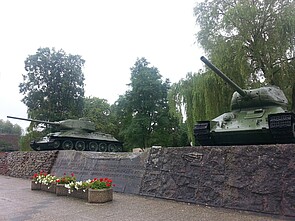
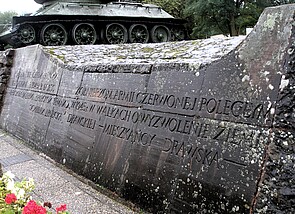
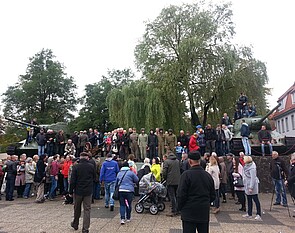
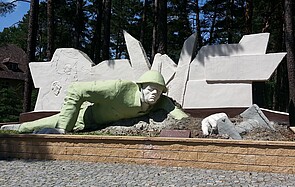
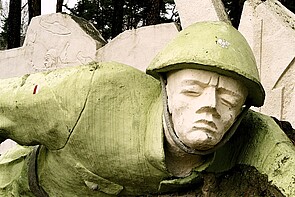
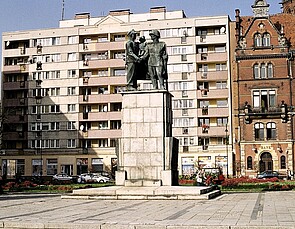
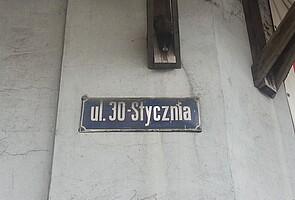
Lidia Zessin-Jurek · 20.04.2023
A History that Connects and Divides: Ukrainian Refugees and Poland in the Face of Russia’s War
Read more
Lidia Zessin-Jurek · 20.12.2021
Trapped in No Man’s Land: Comparing Refugee Crises in the Past and Present
Read more
Interview · 08.03.2021
A Ruling Against Survivors – Aleksandra Gliszczyńska-Grabias about the Trial of Two Polish Holocaust...
Read more
Lidia Zessin-Jurek · 03.09.2019
Hide and Seek with History – Holocaust Teaching at Polish Schools
Read more
Maciej Czerwiński · 11.04.2019
Architecture in the Service of the Nation: The Exhibition ‘Architecture of Independence in Central E...
Read more
Get this article as PDF download (including pictures).